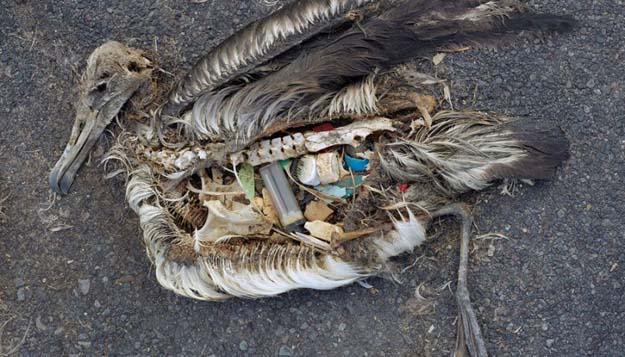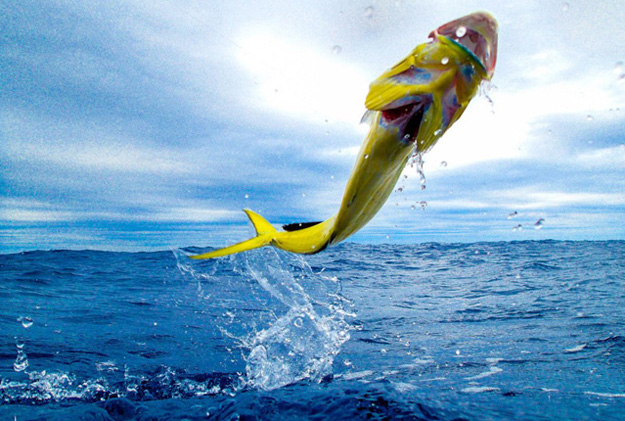
The Great Pacific Garbage Patch is an area of the North Pacific Ocean where currents have trapped huge amounts of debris, mostly plastics. Marine debris is the litter that ends up in oceans, seas, and other large bodies of water. Remarkably, a plastic soda container ring from St. Louis, carelessly discarded, could end up there as could a plastic cup from Osaka, Japan… more than a decade later.
Five Innovative Ways Companies Are Using Ocean Plastic
By Meiling Bedard / Sierra Club
NOTE: Scientists estimate that more than 5 trillion pieces of plastic are floating in the world’s oceans. From flip-flops to microbeads, this pollution poses a serious risk for marine animals, which often mistake plastic for food and starve to death or get caught in plastic packaging and suffocate. Giant plastic islands like the Great Pacific Garbage Patch can span for miles. Since it’s too late to stop that trash from entering the seas, the question is how do we clean it up? Here are some creative ideas.
RUN GREEN

The Adidas and Parley partner to make this running shoe. Photo Adidas.
Activewear companies are known for using synthetic fibers and plastics in their products to make them more durable. Alongside Patagonia and Nike, sportswear giant Adidas will start showcasing sleek, ocean-friendly designs. Last year, Adidas partnered with Parley for the Oceans, an organization that provides a platform for designers, to focus on creating inventive, sustainable new products. The Adidas x Parley, which hits the market later this year, will be made of recovered ocean plastic, run through a 3-D printer to create a stylish running shoe.
GUILT-FREE DRINKS
Buying six-packs of soda can have a deadly effect on sea turtles, seals, and seabirds—even if you recycle the cans. The plastic rings that hold the cans together can get tangled on an unsuspecting animal’s neck or accidentally eaten, which can kill an animal or stunt its growth. Enter the Edible Six Pack Ring, a potential replacement for its plastic cousin. Created by Saltwater Brewery in Florida, these digestible rings are made from barley and other natural materials, so they are biodegradable and sea life can safely eat them. We’ll drink to that!
STYLE GUIDE
Pharrell Williams might not be the first person who comes to mind when you think about green innovations, but the singer turned fashion designer is making waves in the world of ecofriendly fashion. Williams’s newly released clothing line, RAW for the Oceans, is helping turn ocean plastic into wearable fashion. The line is part of his larger G-Star RAW clothing collection, which is made using a four-step process that takes plastics found along shorelines worldwide and breaks them down into a weavable clothing fiber called Bionic Yarn, a product cofounded by Williams. The music star’s new ocean-centric line includes trendy jeans, graphic tees, and modern kimonos.

Plastic found in rainbow runner fish guts. Full stomach, no nutrition. Photo by Algalita Marine Research Foundation.
PLASTIC PARADISE
Trash may be turning our oceans into a deadly plastic soup, but SPARK, an international architectural design firm, is looking to turn this polluting mess into something beautiful. The company hopes to repurpose plastic ocean garbage into brightly colored, solar-powered beach huts along Singapore’s East Coast Park. The huts will utilize high-density polyethylene plastic—known for its flexibility—from the South Pacific Garbage Patch to create the “scales” that make up each hut’s outer shell. The artichoke-shaped structures are designed to perch atop recycled-glass stems so that future beach campers can look out across a (hopefully) cleaner ocean.

Laysan Albatrosses’ Plastic Problem – Midway Atoll, where these photos were taken, is more than 2,000 miles from the nearest land. Photo Chris Jordan
CLEAN DISHES, CLEAN OCEAN
The cleaning products company Method offers an ocean plastic dish and hand soap that is doing double-duty against pollution. Method recovers plastic from the ocean prevents the creation of new plastic by recycling and helps clean shorelines, including removing over one ton of plastics from Hawaii’s beaches. Plus, its soaps are largely biodegradable, and its factory uses wind energy to power production. Once a limited-time product, Method’s ocean plastic bottles are now available across the country.
NOTE: The Faetured Image is by David Cartee. His website . . .


